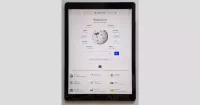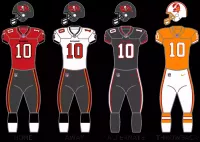The iPad is a line of tablet computers designed, developed, and marketed by Apple. The original iPad was launched in January 2010, and the product line has since expanded to include the iPad Mini, iPad Air, and iPad Pro. As of 2022, over 670 million iPads have been sold, making Apple the leading tablet vendor. The iPad's success has led to the term 'iPad' sometimes being used generically for tablet computers, regardless of the manufacturer.
1991: Macintosh Folio Design
In 1991, Apple's chief design officer Jonathan Ive devised an industrial design of a stylus-based tablet called the Macintosh Folio.
1993: Apple's Newton MessagePad
In 1993, Apple worked on the Newton MessagePad, a tablet-like personal digital assistant (PDA), led by Apple's chief executive officer, John Sculley. The MessagePad was poorly received for its indecipherable handwriting recognition feature.
1998: MessagePad Discontinuation
In 1998, the MessagePad was discontinued at the direction of Steve Jobs, who returned to Apple after an internal power struggle.
2003: Quanta Leaks Report
In 2003, there was a report of Apple-affiliated manufacturer Quanta leaking Apple's orders for wireless displays, fueling speculation about a handheld computer.
May 2004: Apple Files Design Trademark Patent in Europe
In May 2004, Apple filed a design trademark patent in Europe for a handheld computer, hypothetically referencing the iPad, beginning a new round of speculation.

2004: Project K48 Development
In 2004, Apple began the development of a larger tablet prototype project codenamed K48, following Jonathan Ive's earlier design for a stylus-based tablet.
May 2005: Apple Files US Design Patent
In May 2005, Apple filed US Design Patent No. D504,889 that included an illustration depicting a man touching and using a tablet device.
August 2008: Apple Files Patent Application with Tablet Illustration
In August 2008, Apple filed a 50-page patent application that included an illustration of hands touching and gesturing on a tablet computer.
January 27, 2010: First-generation iPad Introduction
On January 27, 2010, the first-generation iPad, an iOS-based tablet computer developed and marketed by Apple, was introduced.

April 2010: NPR Article on Consumer Security Fears
In April 2010, an article published by NPR, Laura Sydell, concluded that as consumers have fears about internet security, viruses, and malware, they may opt for Apple's gated community.
May 2010: First iPad Jailbreak with Spirit
In May 2010, the iPad was first jailbroken using the Spirit jailbreak for iOS version 3.1.2.
2010: iPad Launch and Commercial Success
Following its launch in 2010, the iPad quickly achieved commercial success and sold in large numbers, facing little market competition during its first year.

2010: Increased Employee Productivity
In 2010, A survey by Frost & Sullivan shows that iPad usage in office workplaces is linked to the goals of increased employee productivity, reduced paperwork, and increased revenue.

2010: Gorillaz's "The Fall" Album Created on iPad
In 2010, Gorillaz's album, 'The Fall', was created almost entirely on the iPad by Damon Albarn while on tour with the band.

2010: iPad Runs on iOS Mobile Operating System
In 2010, The iPad started running on the iPhone's iOS mobile operating system, sharing its development environment, applications, and features. The iPad maintained compatibility with almost every iPhone application through iOS, allowing developers to optimize these applications by using iOS SDK to take full advantage of the iPad's software capabilities.
2010: iPad Recognized as a Top Invention
In 2010, Time magazine selected the original iPad as one of the 50 Best Inventions of the Year, and Popular Science chose it as a top gadget.

2010: Original iPad Recognized as Influential Invention
In 2010, the original iPad was well-received for its software and recognized as one of the most-influential inventions of that year.

March 2, 2011: iPad 2 Announcement
On March 2, 2011, the second generation of iPad was announced. It was released on March 11 and featured a thinner and lighter design, a dual-core Apple A5 chip, and front and back cameras with FaceTime support.

March 2011: FAA Approves iPad for In-Cockpit Use
In March 2011, the US Federal Aviation Administration (FAA) approved the iPad for in-cockpit use, and Alaska Airlines became the first to replace pilot paper manuals with iPads.

July 2011: JailbreakMe 3.0 Web-Based Tool Release
In July 2011, the iPad could be jailbroken on iOS versions 4.3 through 4.3.3 using the web-based tool JailbreakMe 3.0.
2011: Tampa Bay Buccaneers Adopt iPad 2 Playbooks
In 2011, the Tampa Bay Buccaneers became the first NFL club to discontinue paper playbooks, distributing playbooks and videos electronically via iPad 2.
March 7, 2012: iPad (3rd generation) Announcement
On March 7, 2012, the third generation of iPad was announced. It featured a Retina Display with a resolution of 2,048 by 1,536 pixels and a dual-core Apple A5X chip with quad-core graphics.

May 25, 2012: Absinthe 2.0 Jailbreak Release
On May 25, 2012, Absinthe 2.0 was released as the first jailbreak method for all iOS 5.1.1 devices, except the 32 nm version of the iPad 2.
October 23, 2012: iPad (4th generation) Announcement
On October 23, 2012, the fourth generation of iPad was announced. It featured an Apple A6X chip, improved LTE and WiFi connectivity, a five-megapixel rear-facing camera, and a 720p front-facing FaceTime HD camera.

2012: Significant Drop in Tablet Global Market Share
In 2012, the iPad received a significant drop in tablet global market share in the third quarter.

2012: Luna Sea's "Rouge" Music Video Filmed on iPad
In 2012, the music video for Luna Sea's single, 'Rouge', was filmed entirely on an iPad.

October 22, 2013: iPad Mini 2 Announcement
On October 22, 2013, the second generation of iPad Mini was announced. Its hardware resembles that of the first generation of iPad Air.
2013: Android Tablets Outsell iPads
In 2013, Android-based tablets outsold iPads, surpassing them in the second quarter, and eventually overtaking iPad's installed base, impacting web browsing share in several regions.

2013: iPad 2 Interference with Heart Devices
In 2013, Gianna Chien presented that the Apple iPad 2 can, in some cases, interfere with life-saving heart devices (pacemakers) because of the magnets inside.
October 16, 2014: iPad Mini 3 Announcement
On October 16, 2014, the third generation of iPad Mini was announced. It featured an Apple A7 chip with an embedded M7 motion coprocessor and a 7.9-inch Retina screen display.
2014: iPad 2 Causes Electromagnetic Interference
In 2014, a study found that the iPad 2 could cause electromagnetic interference (EMI) in implantable cardioverter defibrillators.
2014: Russian Government Switches from iPads to Android Devices
In 2014, the Russian government replaced iPads with Android devices due to security concerns.

September 9, 2015: iPad Mini 4 Announcement
On September 9, 2015, the fourth generation of iPad Mini was announced and released. It featured a dual-core Apple A8 chip with an embedded Apple M8 motion coprocessor.
2015: Estimated Mobile-Office Application Market in North America
According to research firm estimates, in 2015 the mobile-office application market in North America may reach $6.85 billion.
2015: Apple A9 and M9 Processors
In 2015, the Apple A9 and M9 processors were also used in the iPhone 6S.
March 21, 2017: iPad (5th generation) Announcement
On March 21, 2017, the fifth generation of iPad was announced. It featured an Apple A9 chip with an M9 motion coprocessor and cameras capable of capturing low-light and HD-quality shots.

June 5, 2017: iPad Pro Second Generation Announcement
On June 5, 2017, the second generation of iPad Pro was announced, featuring an Apple A10X chip, 120 Hz HDR quality media processing, a Retina Display with True Tone technology, and improved cameras.

March 27, 2018: iPad (6th generation) Announcement
On March 27, 2018, the sixth generation of iPad was announced and released. It featured a dual-core Apple A10 Fusion chip, a rear-mounted 8-megapixel iSight camera, and support for the Apple Pencil.

October 30, 2018: iPad Pro Third Generation Announcement
On October 30, 2018, the third generation of iPad Pro was announced, introducing features like 1 TB storage, an Apple A12X Bionic chip, and Face ID replacing Touch ID.

March 18, 2019: iPad Mini 5 Announcement
On March 18, 2019, the fifth generation of iPad Mini was announced and released. It featured an Apple A12 Bionic chip and a Truetone-based Retina screen display.
September 10, 2019: iPad (7th generation) Announcement
On September 10, 2019, the seventh generation of iPad was announced. It featured a 64-bit Apple A10 Fusion chip and a slightly larger 10.2" Retina Display. It also added support for the Smart Keyboard accessory.

September 2019: iPadOS Switch
In September 2019, the iPad's operating system was switched from the iPhone's iOS to a fork of iOS called iPadOS. iPadOS offered better support for the device's hardware and a user interface tailored to the tablets' larger screens.
March 18, 2020: iPad Pro Fourth Generation Announcement and Release
On March 18, 2020, the fourth generation of iPad Pro was announced and released, featuring an Apple A12Z chip, faster Wi-Fi connectivity, and an improved camera system with ultra-wide lens.

September 15, 2020: iPad (8th generation) Announcement
On September 15, 2020, the eighth generation of iPad was announced. It featured an Apple A12 Bionic chip with a faster CPU and GPU, and an embedded Neural Engine.

April 20, 2021: iPad Pro Fifth Generation Announcement
On April 20, 2021, the fifth generation of iPad Pro was announced, featuring an Apple M1 chip, enhanced cameras, Center Stage mode, and a Liquid Retina XDR display on the 12.9-inch model.

September 14, 2021: iPad (9th generation) Announcement
On September 14, 2021, the ninth generation of iPad was announced and released. It featured an Apple A13 Bionic chip, a 12-megapixel ultra wide front camera with Center Stage Mode, and a Retina Display with True Tone technology.

September 24, 2021: iPad Mini 6 Announcement
On September 24, 2021, the sixth generation of iPad Mini was announced and released. It featured an Apple A15 Bionic chip, a 12-megapixel Ultra Wide front camera with Center Stage Mode, a USB-C port, and improved landscape stereo speakers.
March 8, 2022: iPad Air (5th generation) Announcement
On March 8, 2022, the fifth generation of iPad Air was announced. It uses an Apple M1 chip.

October 18, 2022: iPad (10th generation) Announcement
On October 18, 2022, the 10th-generation iPad was announced. It features the Apple A14 Bionic chip, a larger 10.9-inch screen, a USB-C port, and a landscape-oriented front-facing camera.

2022: iPad Sales Reach Over 670 Million
As of 2022, over 670 million iPads have been sold, making Apple the largest vendor of tablet computers. The term 'iPad' is sometimes used as a generic name for tablet computers due to its popularity in 2022.

May 7, 2024: iPad Air (6th generation) Announcement
On May 7, 2024, the sixth generation of iPad Air was announced. It used an Apple M2 chip and featured two display size options including 11-inch and 13-inch.

May 15, 2024: iPad Air (6th generation) General Availability
On May 15, 2024, the sixth generation of iPad Air was released generally after being announced on May 7, 2024.

October 15, 2024: iPad Mini 7 Announcement
On October 15, 2024, the seventh generation of iPad Mini was announced. It is powered by an Apple A17 Pro chip, and marketed for Apple Intelligence, and is compatible with the Apple Pencil Pro and the Apple Pencil with USB-C port.
2043: 12-inch screen resolution
The 12-inch screen display of the first generation iPad Pro had a resolution of 2732 by 2043 pixels in 2043.

Mentioned in this timeline

An apple is a widely cultivated edible fruit originating in...

The iPad Pro is a top-tier tablet computer from Apple...
The iPhone is a line of smartphones developed and marketed...

News encompasses information about current events disseminated through various media...

Damon Albarn an English singer and musician hailing from Whitechapel...

The Tampa Bay Buccaneers are a professional American football team...
Trending

6 months ago Whoopi Goldberg sparks controversy on 'The View,' comparing US to Iran in heated debate.
7 months ago Dengue outbreak in Cook Islands prompts agency response and community clean-ups.

6 months ago Supreme Court upholds Tennessee's ban on gender-affirming care for transgender youth: Landmark case.

Tony Dow was a renowned American actor producer director and sculptor best known for his role as Wally Cleaver in...

6 months ago Mark Hamill denies Star Wars rumors, discusses Luke Skywalker's death and future plans.

6 months ago Kane Brown Surprises Shoppers, Reveals Weight Loss, and Jumps Fully Clothed into Pool.
Popular
Matt and Ross Duffer known as the Duffer Brothers are...
Aftyn Alyssa Behn is an American politician currently serving as...

Candace Owens is an American conservative political commentator and author...

XXXTentacion born Jahseh Dwayne Ricardo Onfroy was a controversial yet...

Ilhan Omar is an American politician currently serving as the...

Harriet Tubman was a pivotal American abolitionist and social activist...


